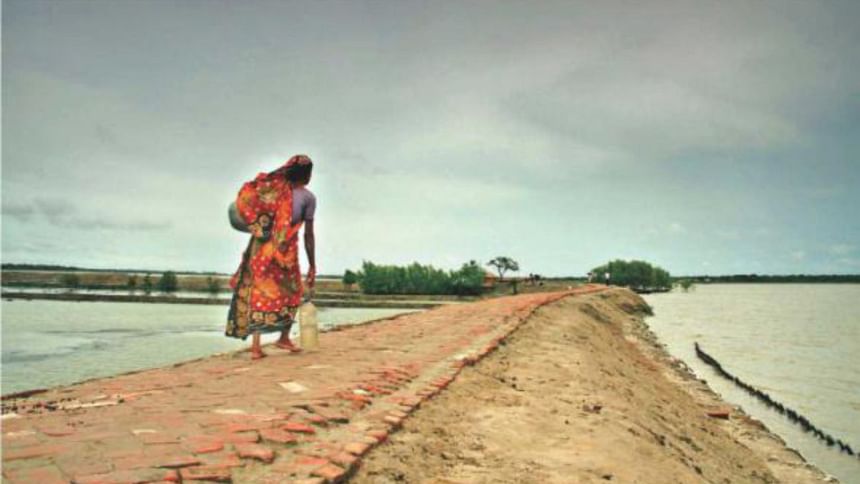The way forward as floodwater recedes

With the widespread media attention being given to Hurricanes Harvey and Irma in the United States, it might seem that the global media has turned away from the deadly flood that has affected one third of Bangladesh. The flood has claimed the lives of 142 people so far, and impacted over 8.5 million. According to the Ministry of Disaster Management and Relief, 335 shelters in the flood-affected areas are sheltering more than 106,000 people.
As reported by Bangladesh's Humanitarian Coordination Task Team (HCTT), reaching the most affected areas in the northwest remains a challenge as roads are either severely damaged or submerged under floodwater. It is estimated that around 9,000 km of roads and 500 bridges and culverts have been damaged in the flood.
The government has allocated USD 1.1 million, 26,726 metric tonnes of rice and 65,260 packets of dry food to the flood-affected districts. It has also allocated 31,980 bundles of Corrugated Iron (CI) sheeting and USD 1.2 million for house reconstruction.
A number of local and international NGOs have come forward to address the plight of the flood-affected people in a region which is already strained by high concentrations of poverty.
Most emergency response programmes are currently providing cash assistance as the flood has wreaked havoc on livelihoods of the people, diminishing their income opportunities. The cash assistance is expected to enable the most vulnerable households among the flood-affected population to meet their immediate basic needs covering food, house repairing, health, livelihood inputs, transports and other non-food items.
Some NGOs are distributing family hygiene kits to the affected households. Mobile Information Desks have been established in some areas to provide information on health, hygiene, waterborne diseases and locally available government and non-government services for the flood-affected people.

As the flood situation is now showing some signs of improvement, the next challenge for the people is to rebuild their lives and livelihoods. According to government estimates, so far a total of 61,877 hectares of cropland, mostly growing rice, have been "completely damaged," while 531 million hectares have been "partially damaged."
What's needed is a massive early recovery effort to rebuild the livelihoods of the affected people. Roads and embankments need to be rebuilt preferably through "Cash for Work" programmes, which will help give the people access to much-needed cash. More than 480 community clinics have been damaged; these need to be brought back into service. As the floodwater recedes, we also need to ensure prevention of post-flood outbreaks of communicable diseases, immunisation, and continuation of primary health care services.
At least 4,000 educational institutions in the country's northern and north-eastern districts have been affected by the flood. An immediate repairing intervention is required to allow students and teachers to return to schools. As always, a close coordination and collaboration between government agencies and non-government organisations will be instrumental in the early recovery efforts and to assist the affected people to regain their livelihoods, access to health care and education services.
Nazrul Islam is the Bangladesh Country Director for Relief International, a Los Angeles-based international humanitarian aid and development agency.
Email: [email protected]





Comments